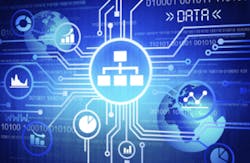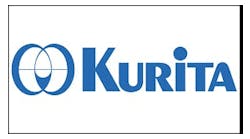Respondents to the WeiserMazars LLP 2014 U.S. Water Industry Outlook, who came from both private and public companies, identified three key challenges for the U.S. water industry:
- Aging infrastructure
- Aging and poor availability of managerial and plant workers
- Need for a simplified rate approval process.
We found that the water industry is doubly challenged by aging infrastructure and aging managerial and plant workers/lack of available workers. This general lack of critical resources is making it very difficult for the industry to increase operational performance, reduce cost and improve customer service.
Of these three primary challenges, the value of smart water metering (SWM) and automated meter reading (AMR) in addressing aging infrastructure and an aging, shrinking workforce has become increasingly clear as both private and public water utilities throughout the country continue to deploy these technologies. Some of the key benefits gained from SWM and AMR are:
- Enhancement in leak detection and repair prioritization
- Reduction in water theft through enhanced detection techniques
- Enhanced workforce management, leading to a reallocation of staff from manual meter reading to more impactful areas of the operations
- Improvements in customer service and satisfaction
- Ability to provide off-cycle meter reading to support the movement of customers
- Streamlined billing process, including the elimination of estimated billings and improvement in billing cycles from quarterly to monthly
- Execute remote service disconnects if required and allowed by local statute
- Better customer awareness and understanding of water usage, leading to increased conservation and reduction in bills
- Remotely checking meter status leads to better workforce management.
As listed above, SWM and AMR provide benefits for both the water system operator and the consumer.
Aging infrastructure
As in previous years, aging infrastructure was of particular concern to respondents, with 32 percent stating that $100 million to $300 million would be needed to modernize and upgrade their facilities and infrastructure. Infrastructure is critical because it has a large impact on the overall performance of water treatment and distribution systems, and it will likely continue to be the number one challenge moving forward.
Also of concern is the amount of nonrevenue water being pumped within the system. Nonrevenue water represents the difference between the water produced and sent into the distribution system, and the amount of water actually billed to a customer.
WeiserMazars’ 2014 U.S. Water Industry Outlook found that 67 percent of respondents had nonrevenue water in excess of 10 percent within their system; and 26 percent had greater than 20 percent nonrevenue water. It is clear from these numbers a large percentage of water operations are faced with the challenge of reducing the nonrevenue water component of their operations. And, they are further pressured by regulators who are limiting cost-recovery rates to a defined amount of nonrevenue water in many locations.
This high level of nonrevenue water is another product of the aging infrastructure of water systems, and implementing SWM and AMR can be an effective first step in addressing the problem.
SWM technologies provide operators with the ability to identify and target both main and customer water leaks. By better identifying system leaks, operations can target limited staff and resources on the areas that will have the greatest impact on the system. This proactive approach to leak management enhances both customer service and system reliability, while reducing the potential for nonrevenue water. These changes will significantly improve overall operational efficiency.
Aging workforce
A major challenge for the water industry is the increasing average age of managerial and plant workers, many of whom are approaching retirement. At the same time, operators are finding it difficult to replace these valuable employees with “new blood.” In the 2014 Outlook, respondents identified improved workforce management as a top priority in responding to this challenge.
Increased adoption of technologies such as SWM and AMR can help this situation by allowing for better workforce management within the field service and customer service areas, essentially giving an organization the ability to do more with less. They also create technology job opportunities, which may attract individuals who had never considered a career in the water industry.
Broadening the industry talent pool will be a step in the right direction in terms of filling the talent void that will be created in the next 10 years as existing workers retire, and will position the industry more competitively in searching for new talent with technology skills.
The implementation of SWM and AMR technologies can help address two of the key challenges facing the water industry today. Simultaneously, the development of creative business solutions allowing more water utilities to take advantage of these technologies will bring improvements that will drive sustainability of our water infrastructure well into the future.
While industry and regulatory groups are pushing for the installation of advanced metering nationwide, it will not be easy to get these technologies in place without concerted effort because of the fragmentation of the water industry. If the industry is to effectively address its challenges, it must begin implementing SWM and AMR as soon as possible.
Robert Wilson, partner, CPA, MBA, CGMA, WeiserMazars LLP, has more than 30 years of experience providing senior leadership, financial reporting and organizational transformation as both an industry insider and consultant to the water and utilities, real estate, finance, manufacturing and information technology sectors. He has significant expertise in audit, governance risk and compliance services including Sarbanes-Oxley compliance, vendor risk management, enterprise risk management, internal audit and internal control design and implementation. Wilson can be reached at 732-205-2016, or by emailing [email protected].


